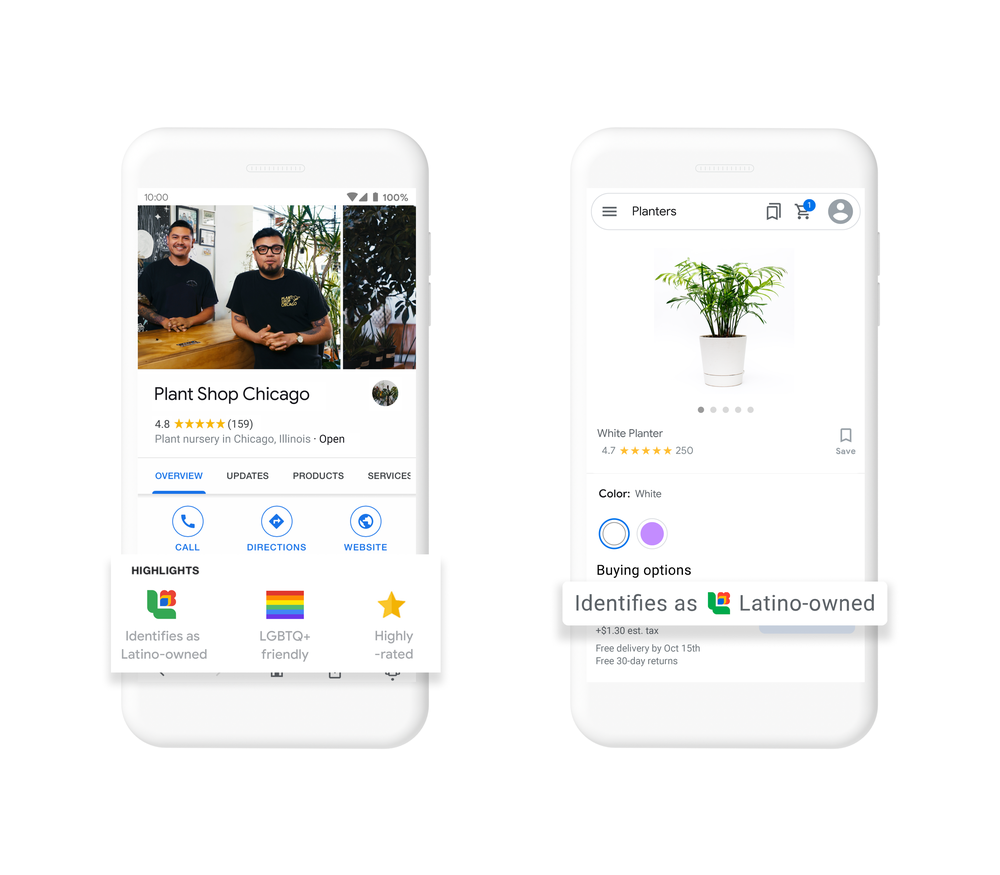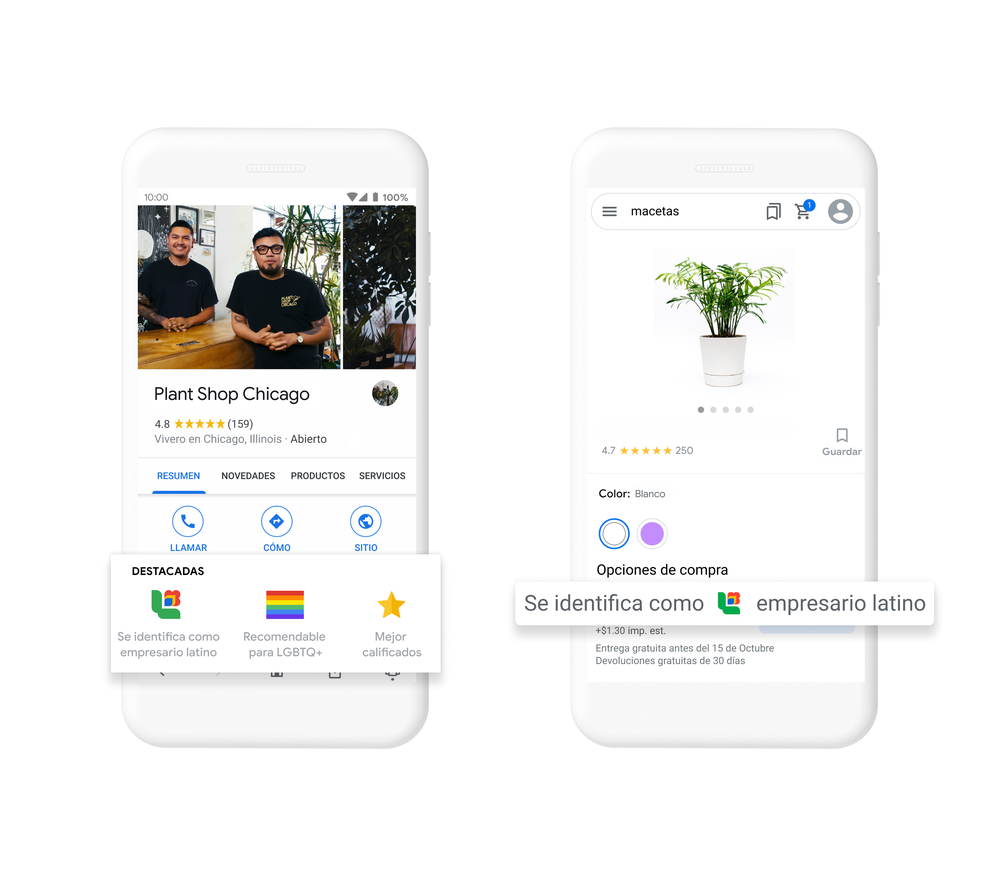Daniel Gagnon,
Google Chrome OS
The Dev channel has been updated to 96.0.4655.0 for Linux and 96.0.4655.5 for Mac. Windows update is coming shortly.
A partial list of changes is available in the log. Interested in switching release channels? Find out how. If you find a new issue, please let us know by filing a bug. The community help forum is also a great place to reach out for help or learn about common issues.
Posted by Wesley Chun (@wescpy), Developer Advocate, Google Cloud

Google Cloud offers three distinct ways of running your code or application in a serverless way, each serving different use cases. Google App Engine, our first Cloud product, was created to give users the ability to deploy source-based web applications or mobile backends directly to the cloud without the need of thinking about servers or scaling. Cloud Functions came later for scenarios where you may not have an entire app, great for one-off utility functions or event-driven microservices. Cloud Run is our latest fully-managed serverless product that gives developers the flexibility of containers along with the convenience of serverless.
As all are serverless compute platforms, users recognize they share some similarities along with clear differences, and often, they ask:
We're going to answer these questions today by sharing a unique application with you, one that can be deployed to all three platforms without changing any application code. All of the necessary changes are done in configuration.
Another challenge for developers can be trying to learn how to use another Cloud product, such as this request, paraphrased from a user:
Sounds simple enough. This user went straight to the App Engine and Translation API documentation where they were able to get started with the App Engine Quickstart to get their app up and going, then found the Translation API setup page and started looking into permissions needed to access the API. However, they got stuck at the Identity and Access Management (IAM) page on roles, being overwhelmed at all the options but no clear path forward. In light of this, let's add a third question to preceding pair outlined earlier:

Nebulous serverless sample app files
Diving straight into the application, let's look at its primary function,translate(): @app.route('/', methods=['GET', 'POST'])
def translate(gcf_request=None):
local_request = gcf_request if gcf_request else request
text = translated = None
if local_request.method == 'POST':
text = local_request.form['text'].strip()
if text:
data = {
'contents': [text],
'parent': PARENT,
'target_language_code': TARGET[0],
}
rsp = TRANSLATE.translate_text(request=data)
translated = rsp.translations[0].translated_text
context = {
'orig': {'text': text, 'lc': SOURCE},
'trans': {'text': translated, 'lc': TARGET},
}
return render_template('index.html', **context)
Core component (translate()) of sample application
ifdef" for Cloud Functions near the top to receive a request object because a web framework isn't used like you'd have with App Engine or Cloud Run, so Cloud Functions provides one for this reason. requirements.txt file* is used in all configurations, whether to install third-party packages locally, or to direct the Cloud Build system to automatically install those libraries during deployment. Beyond requirements.txt, things start to differ: app.yaml file and possibly an appengine_config.py file. Dockerfile (Docker) or Procfile (Cloud Buildpacks), and possibly a service.yaml file. requirements.txt, package.json, etc.). 
"My Google Translate" MVP app (Cloud Run edition)
The user described earlier was overwhelmed at all the IAM roles and options available because this type of detail is required to provide the most security options for accessing Cloud services, but when prototyping, the fastest on-ramp is to use the default service account that comes with Cloud serverless platforms. These help you get that prototype working while allowing you to learn more about IAM roles and required permissions. Once you've progressed far enough to consider deploying to production, you can then follow the best practice of "least privileges" and create your own (user-managed) service accounts with the minimal permissions required so your application functions properly.
To dive in, the code and codelabs (free, self-paced, hands-on tutorials) for each deployment are available in its open source repository. An active Google Cloud billing account is required to deploy this application to each of our serverless platforms even though you can do all of them without incurring charges. More information can be found in the "Cost" section of the repo'sREADME. We hope this sample app teaches you more about the similarities and differences between our plaforms, shows you how you can "shift" applications comfortably between them, and provides a light introduction to another Cloud API. Also check out my colleague's post featuring similar content for Node.js. 
Indian Startups continue to push the bar on taking on complex challenges and building innovative solutions to drive real life impact. And we at Google see this as a real privilege to partner with them in this journey and help them to succeed at scale. We do this under our flagship program Google for Startups Accelerator (GFSA) India. In August, we had announced our 5th class with 16 Seed to Series B startups from 8 different cities across India covering verticals like HealthTech, FinTech, Content with 43% representation by women founders. The cohort’s program is now underway and the startups are busy addressing their technical, product and business challenges through the program, with our mentors and Google teams in active engagement with the founders and their teams.
As the 16 startups in class 5 continue their journey with the program, we are excited to now invite applications for Class 6 of Google for Startups Accelerator India.
Under the program, we continue to focus on supporting startups that are innovating to solve meaningful problems focused on India and the world. As we grow the program with Class 6, we are focusing on supporting solutions that drive scalable impact, scale globally and are built on innovative approaches using AI/ML and data in healthcare, education, finance, enterprise & other spaces such as agritech, media & entertainment, gaming.
For the 6th batch, our Applications are open until 20 October 2021, and we will select 15-20 startups that are building India-first products for the world to join. The Accelerator will continue to run as a fully digital program through the COVID season.
Startups that meet the following criteria are eligible to apply:
AI/ML or data startups in but not limited to healthcare, education, finance, media & entertainment, gaming and enterprise
SaaS startups
Startups based in India
Preferably in the Seed to Series A/B stages
We will host a weekly virtual open forum every Friday, 4 to 5 PM, during the application phase. Startups interested to know more about the Accelerator program can join to get their questions answered. Register here to get invited to one of the sessions.
What can shortlisted Startups expect from the program:
The selected startups will receive mentorship and support around AI/ML, Cloud, UX, Android, Web, Product Strategy and Growth. In addition to mentorship and technical project support, the accelerator provides deep dives and workshops focused on product design, customer acquisition, and founders’ leadership development.
The program also offers access to a global network of startups and mentors/experts. As part of this program, founders outline the top challenges their startups are facing and then match them with relevant experts from Google and the industry to solve those challenges.
We are committed to bring the best of Google to Indian startups and till date we have supported 96 startups helping them to shape their product/company and partnering them in their journey to build very large and successful companies. And we can’t wait to start the next batch of startups.
Posted by Farish CV, Program Manager, Google for Startups Accelerator, India
This week, European and US leaders will convene the first meetings of the Trade and Technology Council (TTC) with the goal of renewing a transatlantic dialogue on critical global challenges and strengthening technological cooperation. As I recently wrote, we strongly support the goals of the Council and believe closer cooperation on digital, trade and economic policy will help achieve shared goals – overcoming the pandemic, achieving an equitable economic recovery, promoting the responsible use of technology, and advancing democratic norms.
The TTC has a wide-ranging agenda, with ten working groups covering a broad array of topics. While it is encouraging that both sides have agreed that all issues should be on the table, the long-term success of the forum will depend on the parties focusing and making progress on the most critical ones. To that end, here are a few that we think merit serious attention:
The historic partnership between Europe and the US faces some profound challenges, but, as in the past, we have always found opportunities to build and strengthen our partnership based on shared values and common principles. The launch of the TTC is proof that our shared values are stronger than any individual difference of opinion. We applaud this initiative and stand ready to contribute to its success.
Pittsburgh is an extraordinary American city. A cornerstone of the Rust Belt economy in the 19th and 20th centuries, Pittsburgh’s steel works, mines, and foundries quite literally built the country. As society shifted, so did the city. Today, Pittsburgh thrives as a hotbed of innovation and creativity, with renowned universities, tech startups and a thriving art scene built on a legacy of manufacturing.
Today, Google Arts & Culture is proud to launch Pittsburgh: Proud and Powerful alongside 15 local institutions to celebrate the city’s sports icons, local artists, up-and-coming musicians, foodie spots, and more. To get started, we invite you to get to know the city through the words of the institutions themselves. Partners include the Carnegie Museum of Art, The Pittsburgh Glass Center, The University of Pittsburgh, Carlow University Art Gallery, BOOM Concepts, Mattress Factory, Carnegie Library of Pittsburgh, The Frick, and more. There’s a little bit of something for everyone — so read on to discover what a few of Google Arts & Culture’s Pittsburgh partners love about their own city.

The University of Pittsburgh is home to the only “Cathedral of Learning” in the world as a monument to the creativity, innovation, and drive that helped make Pittsburgh what it is.

The Pittsburgh Glass Center is one of the top public access glass art facilities in the U.S. Pittsburgh Glass Center offers a unique blend of visual and performance art that combines science, art, and Pittsburgh's rich history in glass.

Commemorating the amazing athleticism and humanitarianism that embodied Roberto Clemente’s life, The Clemente Museum was founded by Executive Director and Curator Duane Rieder to showcase the world’s largest exhibited collection of baseball artifacts, memorabilia, and more.

The August Wilson African American Cultural Center is unique because it gives voice to those who may be overlooked, but oftentimes have the most impactful lessons, this can be seen in our story that spotlights artists from around the world showing us that we have more commonalities than meets the eye.

Since 1984, the Pittsburgh Cultural Trust has worked towards the transformation, cultural and economic development of the Cultural District, a 14-block area in downtown Pittsburgh.

The Senator John Heinz History Center, a Smithsonian Affiliate, focuses on Western Pennsylvania historyand works to demonstrate how the passion, ingenuity, and perseverance of Western Pennsylvanians helped establish a tradition of innovation like no other region in America.

Pittsburgh Ballet Theatre’s collection on Google Arts & Culture highlights the distinct and innovative repertoirethat has defined the organization for more than 50 years.
Want to explore more? Visit g.co/explorepittsburgh, or download Google Arts & Culture’s Android or iOS app.
Ver abajo versión en español
At the United States Hispanic Chamber of Commerce, which I have the honor to lead as president and CEO, helping Latino-owned businesses succeed is at the center of our mission. Our responsibility to the more than 4.7 million Latino-owned businesses and our growing network of 260 local chambers and business associations nationwide is to pursue and advocate for inclusive economic growth and development that build shared prosperity.
We represent the fastest-growing group of entrepreneurs in the U.S., and we don’t take that responsibility lightly. The number of Latino business owners has grown by 34% over the last 10 years compared to just 1% for all other businesses, according to a recent study by the Stanford Latino Entrepreneurship Initiative, and much of this growth has been driven by Latinas. These new businesses are invigorating, highlight our potential and are what motivates me everyday.
In 2020, with the arrival of the COVID-19 pandemic, our chambers became emergency rooms for small businesses. We quickly mobilized and awarded hundreds of thousands of dollars in grants directly to Latino owners and our local chambers to provide assistance. These funds were a lifeline for Latino businesses to keep the lights on, make payroll, rent and meet other critical needs.
We also provided technical assistance, established online resource hubs in English and in Spanish and graduated more than 200 Latino-owned small businesses through our accelerator program.
Last year was also our most active year in Washington, D.C. We raised $850 billion to provide assistance for our Latino small business members. We advocated for access to the Paycheck Protection Program (PPP) for both Latino-owned businesses and 501(c) (6) Chambers of Commerce.
As we take a moment to reflect on our progress to date, we have our eyes on the future. There is no denying that the world has dramatically changed, and we need to adapt and thrive, not just to survive. And technology is driving change forward faster than ever before.
We got a glimpse of the transformational power of technology through our partnership with Google last year. We collaborated to provide extra funding and Grow with Google curriculum support to 40 of our chambers across the country. Together, we trained 10,000 Latino small businesses and the initial results and impact we've seen is truly remarkable.
Google and the United States Hispanic Chamber of Commerce share a deep commitment to economic opportunity, development and advocacy for Latinos. This is why today, we are sharing that Google will be making a $5 million investment in Latino-owned businesses and community organizations. Together we are also unveiling a new Latino-owned attribute that will be available across Google Search, Maps and Shopping. All this is part of Google's $15 million investment in economic equity for Latinos.
Today, we are deepening our partnership with Google with an additional investment that will allow us to create Grow with Google digital resource centers and train an additional 10,000 Latino business owners on how to use digital tools to grow their business. This work is critical to setting up Latino business owners for success for the long haul. These new skills, training and resources will help them be competitive in today's digital economy and allow us to help aspiring entrepreneurs to think digital-first.
Google.org is also providing funding to support the Latino Community Foundation's Entrepreneurship Fund, an initiative that strengthens Latino-led small businesses and micro-entrepreneurs across California. It will directly invest in 150+ micro-entrepreneurs to support the tireless work of street vendors, cleaning services, landscapers, childcare providers and other micro-entrepreneurs. For Latino-owned businesses, running a business is often a family affair, and the Entrepreneurship Fund will increase and improve the online presence for Latino-owned small restaurants through the creation of websites and social media accounts designed and managed by youth participating in tech skills building programs.
This is in addition to Google's ongoing support of nonprofits through $3 million in donated ads to Latino organizations. This includes the Hispanic Access Foundation, which uses Google.org's support to advertise internships for Latino college students, fundraise for DACA fee scholarships, and more — all in service of enabling more Latinos in the U.S. to achieve economic success.
Today, we are partnering with Google to unveil a Latino-owned attribute that will be available on Search, Maps and Shopping, in the coming weeks, so businesses can easily identify as Latino-owned on Google. This update builds on the Black-owned, Veteran-owned and Women-owned business attributes, and is another way people can support diverse businesses across Google’s products and platforms.

For more than 20 years, Google has been at the forefront of democratizing access for all — it's one of its core values. Underrepresented groups have been beneficiaries of that mission, which is still alive today. This is why we deeply believe Google's open platforms, digital training, tools and resources are critical to advancing economic equity for the Latino community.
Today's investments and product updates will provide our members, chambers and our communities a much needed boost. We are glad to help spotlight Latino-owned businesses in a new light, showcase our resilient spirit and invoke action. We are energized by our momentum and are eager to get back to business. I believe our future is bright - and today thanks to Google, it's a little brighter.
Google y la Cámara de Comercio Hispana de los Estados Unidos (United States Hispanic Chamber of Commerce) se asocian para ofrecer un atributo de propietarios latinos en Búsqueda (Search), Maps, y Shopping, además de nuevo apoyo financiero y capacitación en habilidades para propietarios de empresas latinas y organizaciones sin fines de lucro.
En la Cámara de Comercio Hispana de los Estados Unidos, donde tengo el honor de dirigir como presidente y director ejecutivo, ayudar a las empresas latinas a tener éxito está al centro de nuestra misión. Nuestra responsabilidad con las más de 4.7 millones de empresas de propietarios latinos y nuestra creciente red de 260 cámaras locales y asociaciones comerciales en todo el país es buscar y abogar por el crecimiento y el desarrollo económico que construya la prosperidad compartida.
Representamos al grupo de emprendedores de más rápido crecimiento en los Estados Unidos y no nos tomamos esa responsabilidad a la ligera. El número de propietarios de negocios latinos ha crecido en un 34% en los últimos 10 años en comparación con solo el 1% de todos los demás negocios, según un estudio reciente de Stanford Latino Entrepreneurship Initiative, y gran parte de este crecimiento ha sido impulsado por latinas. Estos nuevos negocios son estimulantes, resaltan nuestro potencial y son lo que me motiva todos los días.
En 2020, con la llegada de la pandemia COVID-19, nuestras cámaras se convirtieron en salas de emergencia para pequeñas empresas. Rápidamente nos movilizamos y otorgamos cientos de miles de dólares en subvenciones directamente a pequeñas empresas de propietarios latinos y nuestras cámaras locales para brindar asistencia. Estos fondos fueron un salvavidas para las empresas latinas para mantener las luces encendidas, pagar nóminas, renta y satisfacer otras necesidades críticas.
También brindamos asistencia técnica, establecimos centros de recursos en línea en inglés y en español y graduamos a más de 200 pequeñas empresas latinas a través de nuestro programa acelerador de pequeñas empresas.
El año pasado también fue nuestro año más activo en Washington, D.C. Recaudamos $850 mil millones de dólares para brindar asistencia a nuestros miembros latinos de pequeñas empresas. Abogamos por el acceso al Programa de Protección de Cheques de Pago (PPP) tanto para las empresas propiedad de latinos como para las Cámaras de Comercio 501 (c) (6).
Mientras nos tomamos un momento para reflexionar sobre nuestro progreso hasta la fecha, tenemos la mirada puesta en el futuro. No se puede negar que el mundo ha cambiado drásticamente y que necesitamos adaptarnos y prosperar, no solo para sobrevivir. Y la tecnología está impulsando el cambio más rápido que nunca.
Pudimos vislumbrar el poder transformador de la tecnología a través de nuestra asociación con Google el año pasado. Colaboramos para proporcionar financiación adicional y curriculum de Grow with Google a 40 de nuestras cámaras en todo el país. Juntos, capacitamos a 10,000 pequeñas empresas latinas y los resultados iniciales y el impacto que hemos visto son realmente notables.
Google y la Cámara de Comercio Hispana de los Estados Unidos comparten un profundo compromiso con las oportunidades económicas, desarrollo y abogacía para latinos. Es por eso que hoy compartimos que Google realizará una inversión de $5 millones de dólares en la comunidad empresarial de propietarios latinos y organizaciones comunitarias. Juntos estamos presentando un nuevo atributo de propietarios latinos que estará disponible en la Búsqueda de Google, Maps y Shopping. Todo esto es parte de la inversión de $15 millones de dólares de Google en equidad económica para latinos.
Hoy, estamos profundizando nuestra asociación con Google con una inversión adicional que nos permitirá crear centros de recursos digitales Grow with Google y capacitar a 10,000 propietarios de negocios latinos adicionales sobre cómo usar herramientas digitales para hacer crecer su negocio. Este trabajo es fundamental para que los empresarios latinos tengan éxito a largo plazo. Estas nuevas habilidades, capacitación y recursos los ayudarán a ser competitivos en la economía digital actual y nos permitirán ayudar a los aspirantes emprendedores a pensar primero en lo digital.
Google.org también está proporcionando fondos para apoyar el Fondo de Emprendimiento (Entrepreneurship Fund) del Latino Community Foundation, una iniciativa que fortalece a las pequeñas empresas y microempresarios liderados por latinos en todo California. Invertirá directamente en más de 150 microempresarios para apoyar el trabajo incansable de los vendedores ambulantes, servicios de limpieza, jardineros, proveedores de cuidado infantil y otros microempresarios. Para las empresas de propietarios latinos, administrar una empresa es a menudo un asunto familiar, y el Fondo de Emprendimiento aumentará y mejorará la presencia en línea de los pequeños restaurantes de propietarios latinos a través de la creación de sitios web y cuentas de redes sociales diseñadas y administradas por jóvenes que participan en programas que forman sus habilidades tecnológicas.
Esto, en adición al apoyo continuo de Google a las organizaciones sin fines de lucro a través de $3 millones de dólares en anuncios donados a organizaciones latinas. Esto incluye la Hispanic Access Foundation
https://hispanicaccess.org/
, que utiliza el apoyo de Google.org para anunciar prácticas para estudiantes universitarios latinos, recaudar fondos para becas que cubren los costos de DACA y más — todo al servicio de permitir que más latinos en los Estados Unidos logren el éxito económico.Hoy, nos asociamos con Google para anunciar un atributo de propietarios latinos que estará disponible en la Búsqueda, Maps y Shopping en las próximas semanas, para que las empresas puedan identificarse fácilmente como propietarios latinos en Google. Esta actualización se basa en los atributos de negocios Black-owned, Veteran-owned y Women-owned; y es otra manera la gente puede apoyar a diversas empresas a través de productos y plataformas de Google.

Durante más de 20 años, Google ha estado a la vanguardia de la democratización del acceso para todos — es uno de sus valores fundamentales. Los grupos subrepresentados se han beneficiado de esa misión, la cual continúa vigente hoy. Es por eso que creemos profundamente que las plataformas abiertas, la capacitación digital, las herramientas y los recursos de Google son fundamentales para promover la equidad económica para la comunidad latina.
Las inversiones de hoy y las actualizaciones de productos proporcionarán a nuestros miembros, cámaras y comunidades un impulso muy necesario. Nos complace ayudar a destacar las empresas de propietarios latinos bajo una nueva luz, mostrar nuestro espíritu resistente e invocar la acción. Nuestro impulso nos llena de energía y estamos ansiosos por volver al trabajo. Creo que nuestro futuro es brillante, y hoy, gracias a Google, es un poco más brillante.